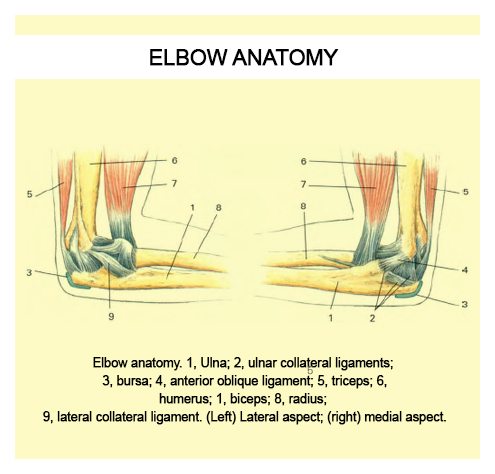Medical professionals will be able to assess, test and diagnose whether you have tennis elbow or golfer’s elbow through a variety of processes.
To begin with, they will gather amedical history about you and your current condition and symptoms. They will inquire about the intensity of your present pain, the duration of your symptoms and the limitations you are experiencing (i.e. does it hurt when you move your wrist). Details about what instigated the problem, when it started, and whether or not you have ever had treatments for this or a similar condition in the past, are very helpful in assessing your injury.
A physical examination will be performed to determine if you have any signs of tennis elbow, golfer’s elbow or other elbow injuries. They will visually assess and palpate (feel) the bones and soft tissue in both your elbows to evaluate symmetry and recognize differences. This will identify any abnormalities, such as mild or severe inflammation (redness, warmth, swelling, pain or dysfunction), bone deformity, and atrophied muscles. You will generally be asked to complete a series of elbow, wrist, finger or forearm movements to test possible elbow injuries, as well as your range of motion, muscle strength, joint stability and location of tenderness.
An X-ray can assist your doctor in eliminating other causes of elbow pain, such as arthritis or a fracture, however it is often not required. Rarely are more complex diagnostic tests requested; occasionally an EMG (electromyography) or nerve studies will be recommended if more information is needed.
How to Treat Your Elbow Tendon Injury
It is important to treat tendon injuries as soon as possible, as any activity or strain you put on your tendon can re-injure it further
The trick with any tendon injury is getting it toheal with minimal scar tissue formation. Even with optimum healing, there is always less elasticity in a previously injured tendon. This will cause the tendon to hurt, during exercise and everyday activities. However, if you heal your injury efficiently and quickly, your chance of re-injury later on is much lower than average.
Allowing your elbow to rest is always recommended following injury. Avoid all activities that may have caused the injury or irritation and begin cold compression treatments as soon as possible. Blood Flow Stimulation Therapy™ (BFST®) promotes blood flow to heal your tendon faster and more completely than any other methods available.
Although steroid injections may provide temporary relief from the pain of tendinitis or tendinosis, they should generally be avoided as they weaken the tendon. If you do opt for an injection, doctors usually recommend that you do not participate in strenuous activities for several weeks to reduce the risk of a rupture.
